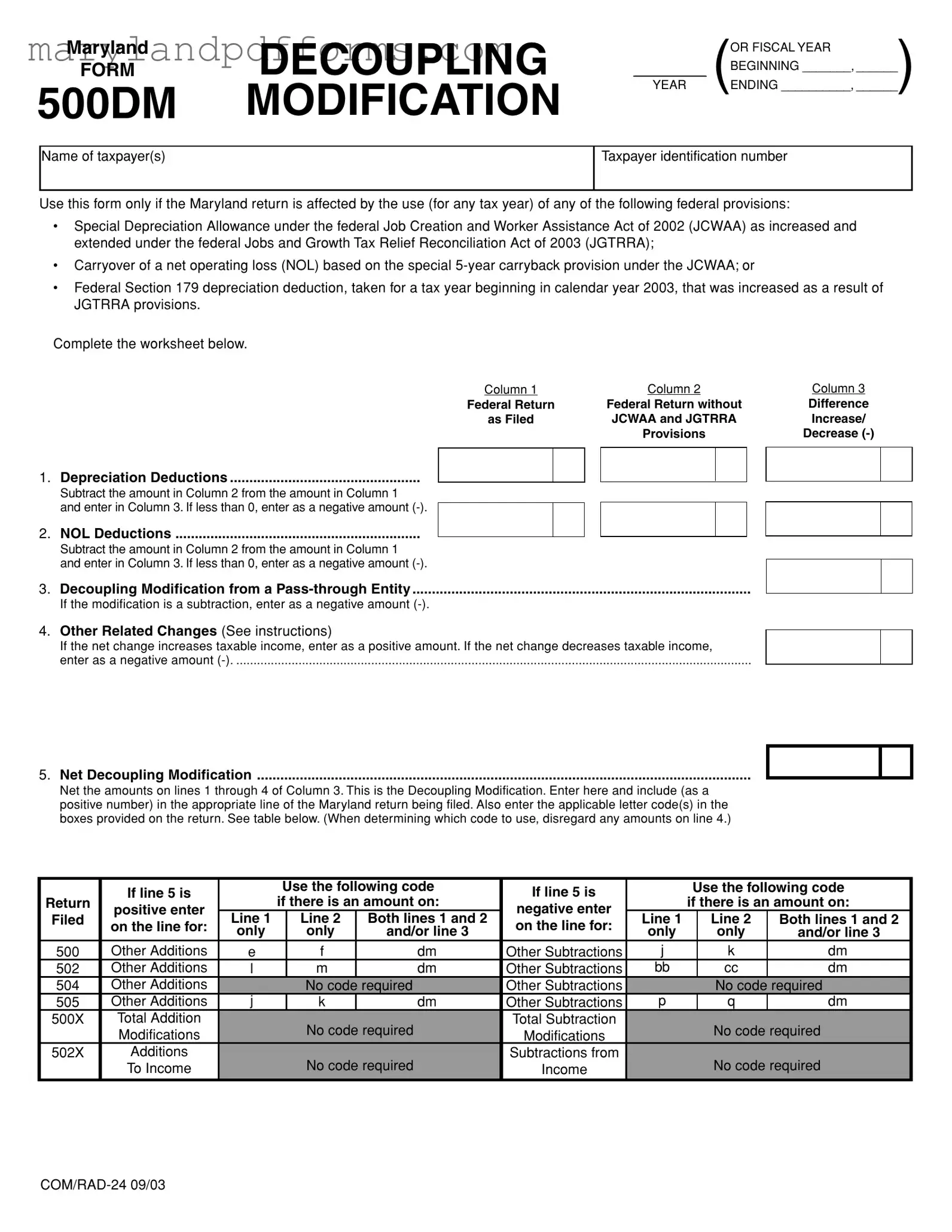The Maryland 500DM form is used to report decoupling modifications from certain federal tax provisions. These provisions include special depreciation allowances and net operating loss carrybacks. The form helps determine the necessary adjustments to your Maryland income tax return, ensuring that the impact of federal changes is eliminated for state tax purposes.
If your Maryland return is affected by federal provisions such as the Job Creation and Worker Assistance Act of 2002 or the Jobs and Growth Tax Relief Reconciliation Act of 2003, you must file the 500DM form. This includes individuals and entities that have taken advantage of special depreciation allowances or have net operating losses that need to be adjusted.
To complete the form, you will need to fill out a worksheet that compares your federal return as filed with a pro forma return that excludes the federal provisions. You'll list depreciation deductions, NOL deductions, and any other related changes. The differences between these amounts will help you determine your decoupling modification.
You will need to provide the following information on the 500DM form:
-
Name of taxpayer(s)
-
Taxpayer identification number
-
Details of depreciation deductions and NOL deductions
-
Any modifications from pass-through entities
-
Other related changes that affect taxable income
Once you complete the Maryland 500DM form, attach it to your Maryland income tax return. If you are filing an amended return, include the 500DM form along with any necessary schedules and pro forma returns. Keep copies of all documents for your records.
Are there any specific instructions for pass-through entities?
Yes, if you are a partner, shareholder, or member of a pass-through entity, you must report your share of the decoupling modification on line 3 of the 500DM form. You should also ensure that the pass-through entity provides you with a statement of your share of the modification.
If you have questions regarding the 500DM form, you can contact the Revenue Administration Division in Annapolis, Maryland. They can be reached at 410-260-7980 or toll-free at 1-800-MDTAXES. More information is also available on the Maryland taxes website.
Failing to file the Maryland 500DM form when required may result in incorrect tax calculations. This could lead to penalties, interest, or additional tax liabilities. It’s important to ensure that your Maryland return accurately reflects any necessary adjustments due to federal provisions.
